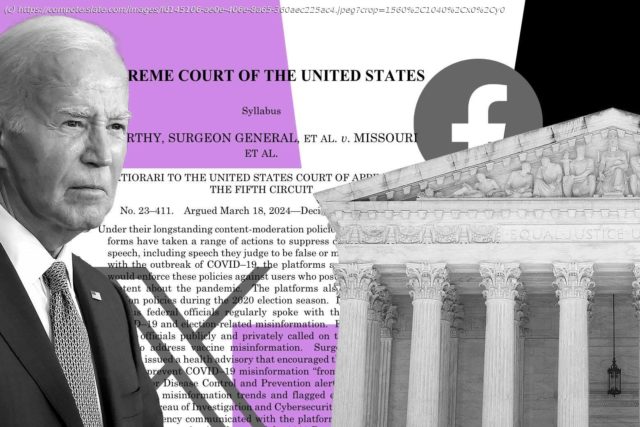The administration, alarmed by Doughty’s injunction, shut down most of its anti-disinformation work.
The Supreme Court is losing its patience with hyperpartisan lower court judges who are eager to transform goofy political stunts into legitimate constitutional controversies. That’s the overarching message of the court’s 6–3 decision in Murthy v. Missouri, handed down on Wednesday. Justice Amy Coney Barrett sounds increasingly annoyed as her majority opinion progresses, irked at all the legal sophistry and bogus facts she has to swat down at every turn. On the surface, the case is about the government’s ability to request that social media companies moderate certain content. And on that front, it’s a big win for the Biden administration, which can resume these communications with less fear of judicial retribution.
But Murthy is also about conservative lower courts’ alarming desire to distort the law in response to conspiracy theories peddled by Republican activists and politicians. Barrett’s exasperated bench-slap of these courts signals a dwindling tolerance for such chicanery among SCOTUS’ less extreme conservatives.
The lawsuit at the heart of Murthy was cobbled together in 2022 by a motley crew of plaintiffs—none of whom, it turns out, ever even had standing to sue. Missouri and Louisiana were joined by a group of election denialists and vaccine skeptics who alleged that social media companies like Facebook and Twitter were censoring their speech. These platforms are, of course, private corporations, which are not subject to the First Amendment because they are not the government. So the plaintiffs developed a theory that government officials were “coercing” the platforms to remove their speech about elections and vaccines. This “coercion,” they argued, violated their First Amendment right to free speech. (The states claimed to sue on behalf of their residents’ “right to hear” others’ speech.)
Off the bat, it’s important to understand that the plaintiffs’ claims amount to a risible conspiracy theory. Yes, government officials encouraged platforms to remove verifiably false claims about, say, the COVID vaccine killing people. But as Barrett pointed out on Wednesday, the platforms were already removing anti-vax content long before officials urged them to. There is no evidence in the vast record that demonstrates active “coercion,” no smoking gun that shows some government employee ordering a platform to take down specific content or else. At best, the record shows the White House and several federal agencies engaging in persuasion, explaining to platforms why, in their views, they ought to moderate some content more strictly. As Justice Brett Kavanaugh explained at oral arguments, though, persuasion is not censorship: Government officials have their own authority to communicate with private companies, and do not trip some invisible First Amendment wire when they make their opinions known.
Home
United States
USA — mix The Supreme Court Gave Biden a Chance to Fight Disinformation. It’s Too...






